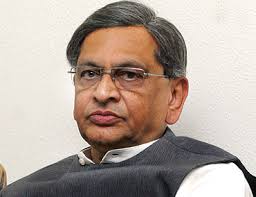Bangalore, Jun 10: AICC vice president Rahul Gandhi has stuck to his stand of giving opportunities to young leaders and bid goodbye to old-timers in elections. The party has chosen M?V?Rajeev Gowda over one of its oldest leaders and former union minister S?M?Krishna as its candidate for the Rajya Sabha elections from the State.
 Gowda, 50, teaches economics at Indian Institute of Management, Bangalore. He is among the AICC’s panel of 40 to 50 spokespersons. The sitting RS member Krishna is 83. Till three days ago, there was no doubt about the candidature of Krishna.
Gowda, 50, teaches economics at Indian Institute of Management, Bangalore. He is among the AICC’s panel of 40 to 50 spokespersons. The sitting RS member Krishna is 83. Till three days ago, there was no doubt about the candidature of Krishna.
However, suddenly there was a change in the thinking of the high command and Rahul stuck to his stand of not encouraging leaders who are aged more than 75 to become MPs.
Congress insiders see the party’s decision against fielding Krishna for the RS?polls at the end of his long political career. He had served in public life in various capacities in the last five decades. He has served as union minister, Speaker of the Legislative Assembly, State Congress president, chief minister of Karnataka and Governor of Maharashtra. With bleak chances of Congress coming to power at the Centre in the near future, there is no scope for him to occupy any prime position, it is said. Krishna, who was in Bangalore, remained incommunicado.
Ever since his resignation as the external affairs minister in October 2012, Krishna has been keeping a low profile in the party. The party, too, did not involve him much in both the Assembly and Lok Sabha elections. So much so that it refused to give tickets to contest the Assembly elections to many of his followers, including Ravindra Srikantaiah from Srirangapatna.
Rajeeva Gowda, son of former Assembly Speaker the late M V Venkatappa, holds a doctor of philosophy (PhD) in Public Policy and Management from the Wharton School, University of Pennsylvania, USA.
Gowda had aspired to contest the recent Lok Sabha polls from Bangalore North constituency. He unsuccessfully contested the internal elections (also called primaries) conducted by the party to choose the candidate for the constituency.
C?Narayanaswamy won the internal polls and became the candidate, but could not win the seat. Many senior party leaders were taken by surprise over Gowda’s lobbying for a ticket in Delhi. They presumed that at the most, he may become an MLC.
The party had given preference to youth in most cases while fielding candidates for the Lok Sabha elections in the State. Former union minister and leader of the minorities C K Jaffer Sharief’s plea for a ticket to contest from Bangalore Central constituency was overlooked by the party. Instead, youth Congress leader Rizwan Arshad was fielded. But, Arshad lost the elections.
The party did not budge from its stand, despite Sharief threatening to join the JD(S). He went to the extent of resigning from the party membership, but the Congress remained undeterred. Many old-timers in the party fear that they would meet the same fate in the coming days.
Senior leader M V Rajasekharan said Rajya Sabha is the House of Elders. “Presence of experienced leaders like S M Krishna is necessary in the Upper House. I hope the party will utilise the experience of Krishna in the coming days,” he said.
Parameshwara, who is a follower of Krishna, said he has been pained by the party’s decision not to field Krishna and expressed hope that he will be given a suitable position in the coming days.





Comments
Add new comment